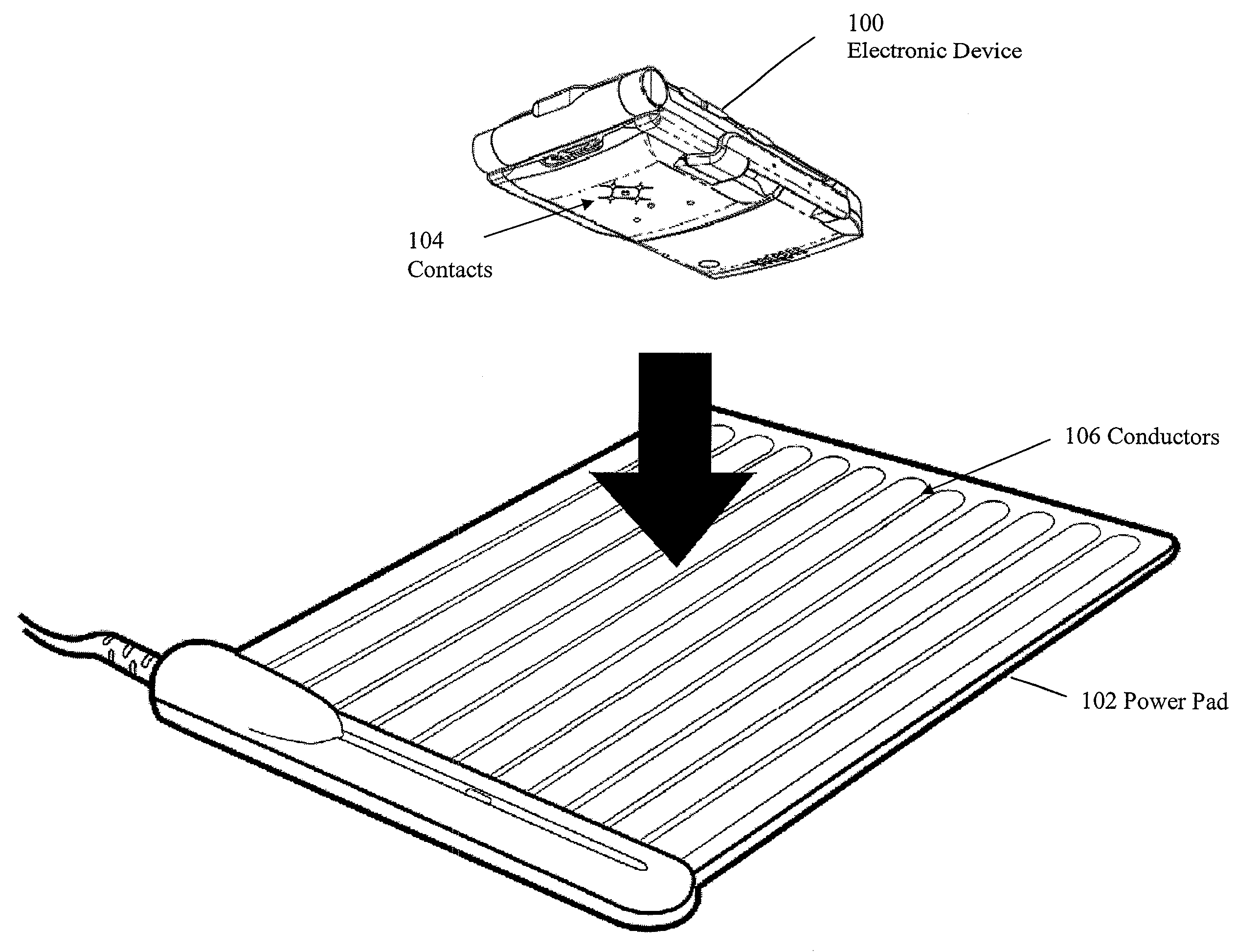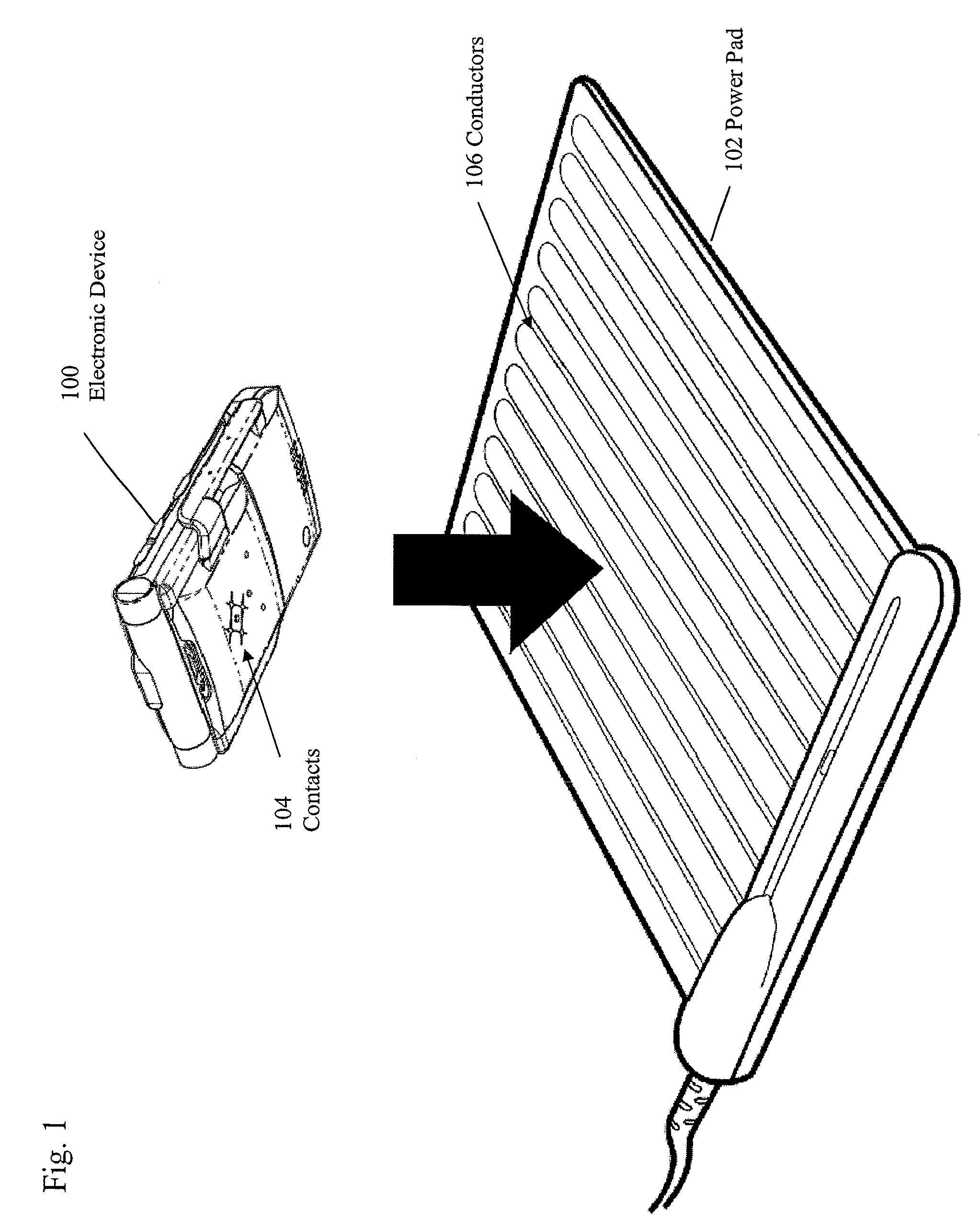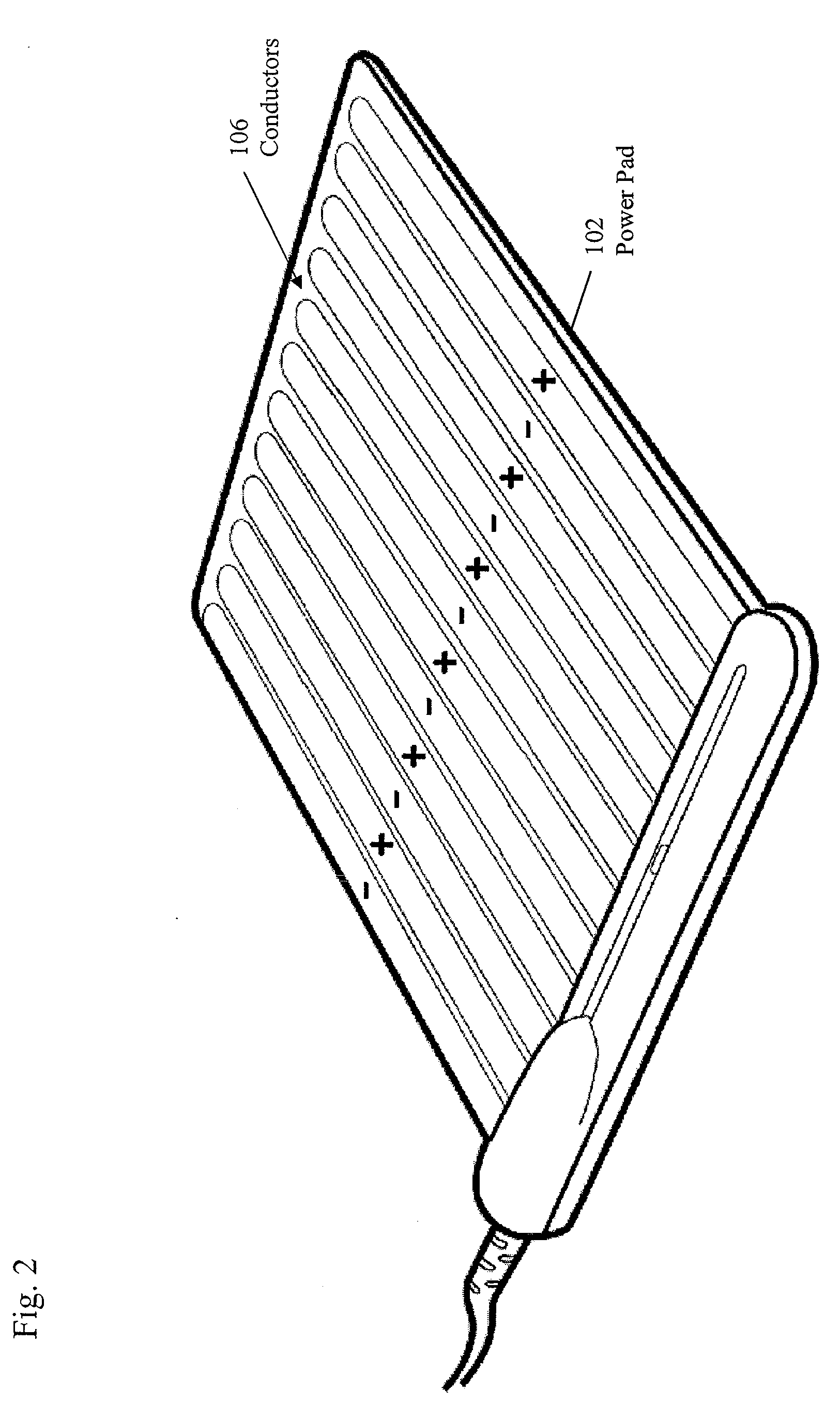Protection of exposed contacts connected to a bridge rectifier against electrostatic discharge
a bridge rectifier and exposed contact technology, applied in emergency protective circuit arrangements, emergency protective arrangements for limiting excess voltage/current, etc., can solve problems such as damage to circuit components, electrostatic discharge is a common problem, etc., and achieve the effect of preventing damage to the diodes
- Summary
- Abstract
- Description
- Claims
- Application Information
AI Technical Summary
Benefits of technology
Problems solved by technology
Method used
Image
Examples
Embodiment Construction
[0026]FIG. 1 is a schematic perspective view of a system for charging and / or providing power to an electronic device 100. As shown in FIG. 1, a power pad 102 contains a plurality of conductors for charging and / or providing power to the electronic device 100. Electronic device 100 can comprise devices such as cell phones, MP3 players, video players, smart phones, satellite phones, telematics devices, pagers, monitors, bar code scanners, GPS navigational devices, walkie talkies, personal digital assistants, and various types of computers, including portable computers, handheld computers, laptop computers, ultra-mobile computers, tablet computers, and various hybrid devices that combine one or more of these functions, or any portable electronic device, or other devices that can be charged, such as battery packs, capacitive devices, etc. Various features are more fully disclosed in U.S. patent application Ser. No. 11 / 672,010, filed Feb. 6, 2007, U.S. patent application Ser. No. 11 / 682,3...
PUM
 Login to View More
Login to View More Abstract
Description
Claims
Application Information
 Login to View More
Login to View More - R&D
- Intellectual Property
- Life Sciences
- Materials
- Tech Scout
- Unparalleled Data Quality
- Higher Quality Content
- 60% Fewer Hallucinations
Browse by: Latest US Patents, China's latest patents, Technical Efficacy Thesaurus, Application Domain, Technology Topic, Popular Technical Reports.
© 2025 PatSnap. All rights reserved.Legal|Privacy policy|Modern Slavery Act Transparency Statement|Sitemap|About US| Contact US: help@patsnap.com



